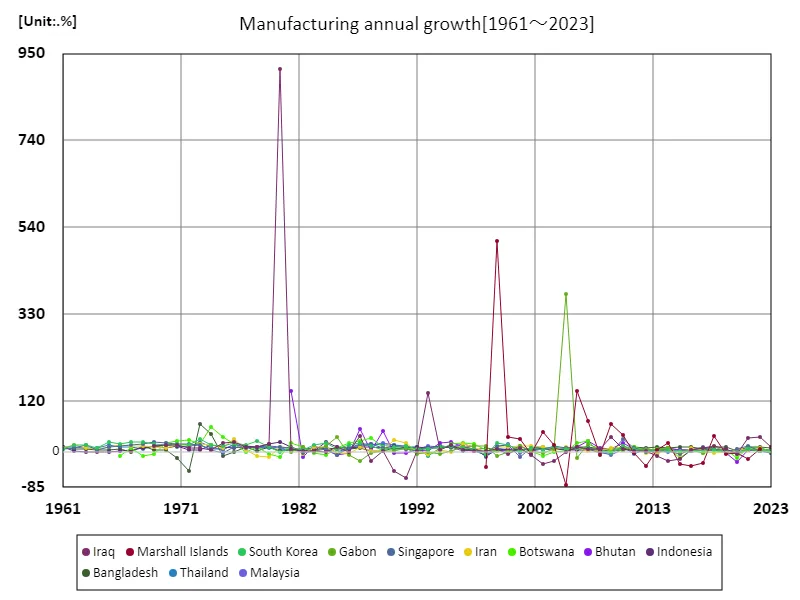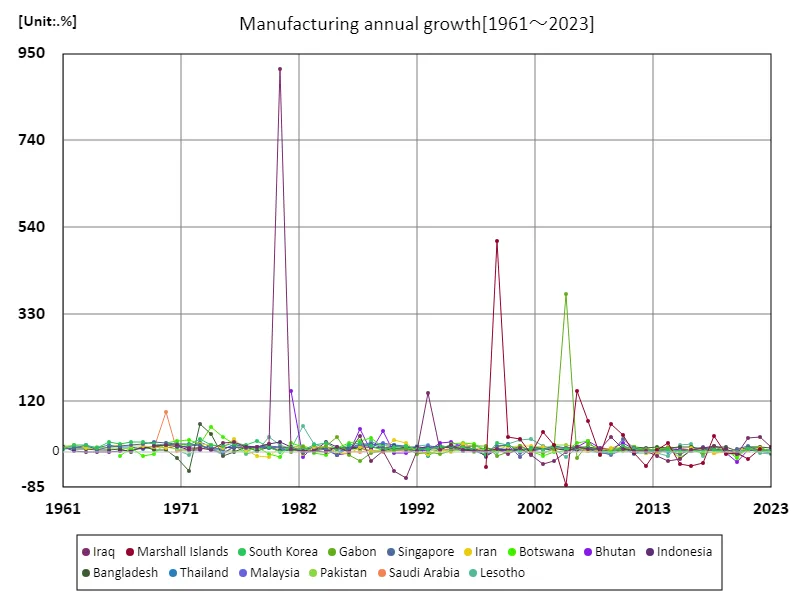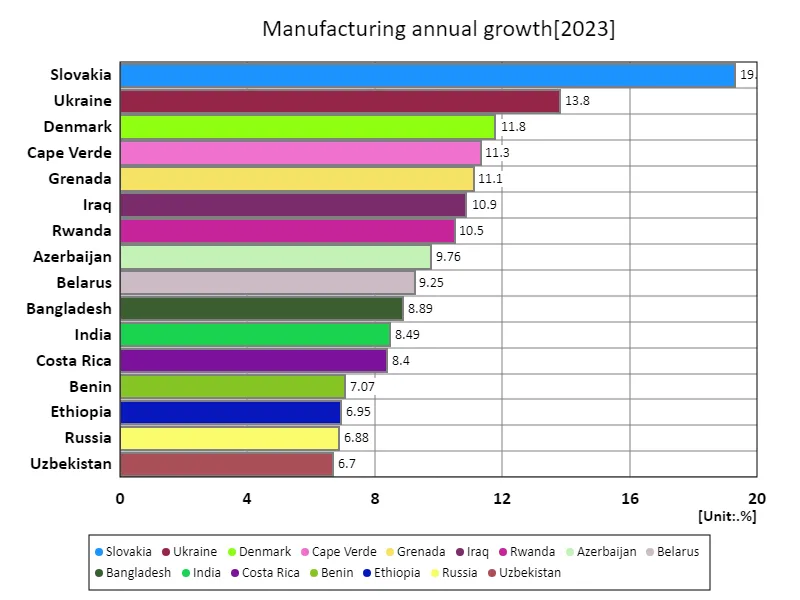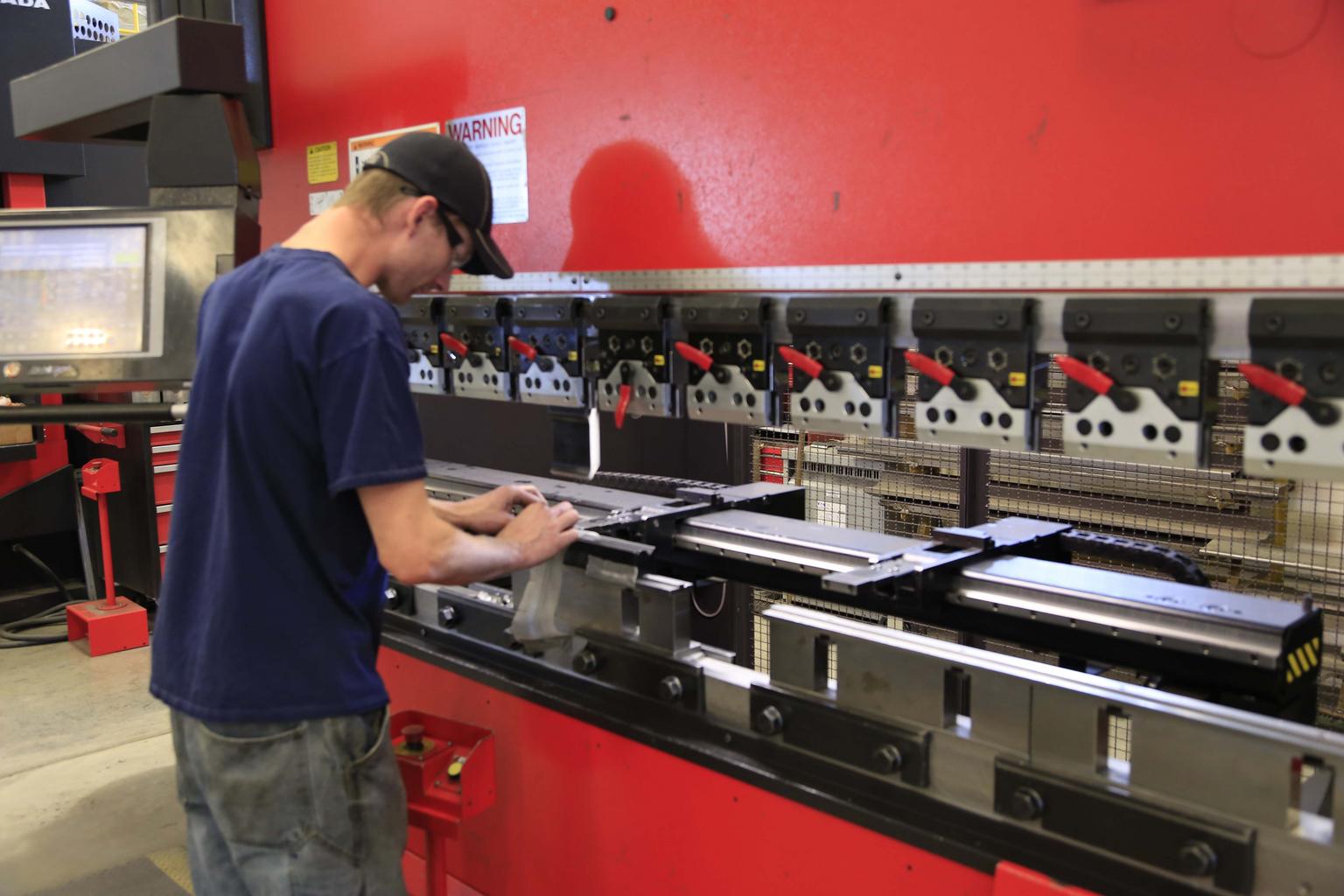Abstract
The manufacturing sector of the global economy has shown varying trends over the past few decades, largely influenced by technological advancements, globalization, and shifts in economic focus. From the mid-20th century through the early 2000s, rapid industrialization and economic expansion in countries like China, India, and other Asian economies drove significant growth in global manufacturing output. However, this momentum began to taper off in recent years due to factors like demographic changes, slowing productivity growth, and geopolitical tensions.In recent years, emerging economies such as Iraq have seen a resurgence in manufacturing, driven by both economic diversification efforts and post-conflict reconstruction. The latest figures from 2023 indicate that Iraq’s manufacturing sector grew at an impressive rate of 10.9%, highlighting a trend of renewed investment and economic activity. This surge reflects broader shifts in global manufacturing patterns, where countries continue to seek new opportunities for growth, especially in areas such as renewable energy technology, electronics, and advanced materials.2/2
Manufacturing, annual growth rate
Iraq’s manufacturing sector saw extraordinary growth in 1980, reaching a peak with a 913% increase, driven by oil revenues and industrial expansion. Since then, Iraq’s manufacturing sector has faced challenges, including wars, sanctions, and instability, leading to fluctuating growth rates. Currently, Iraq is 1.19% below its 1980 peak, reflecting both recovery efforts and ongoing obstacles. Over time, global trends show a shift toward service-based economies, with manufacturing growth concentrated in emerging markets. Despite setbacks, Iraq’s sector continues to show potential for growth, spurred by diversification and reconstruction efforts.


The maximum is 913%[1980] of Iraq, and the current value is about 1.19%
Manufacturing, annual growth rate (worldwide)
Iraq’s manufacturing sector experienced remarkable growth in 1980, with a peak increase of 913%, driven by oil wealth and industrial development. However, this growth was followed by decades of conflict and instability, causing disruptions in industrial output. Despite these challenges, Iraq’s manufacturing sector has shown resilience, and is currently just 1.19% below its 1980 peak, signaling a slow but steady recovery. Globally, manufacturing has shifted towards automation and technology, with emerging markets increasingly driving growth. Iraq’s future growth hinges on diversification and rebuilding its industrial base.


The maximum is 913%[1980] of Iraq, and the current value is about 1.19%
Manufacturing, annual growth rate (world countries, latest year)
Slovakia’s manufacturing sector surged by 19.3% in 2023, significantly outpacing the global average growth rate of 1.04%. This remarkable performance highlights Slovakia’s continued strength in industries such as automotive manufacturing and high-tech production, boosted by its strategic location in Europe and a skilled workforce. Over recent decades, global manufacturing growth has been modest, with a total increase of 131% since 1961. However, Slovakia’s recent boom underscores a broader trend where select economies are thriving through industrial specialization, innovation, and foreign investment, while others face slower growth due to challenges like automation and outsourcing.


The maximum is 19.3% of Slovakia, the average is 981m%, and the total is 123%



Comments